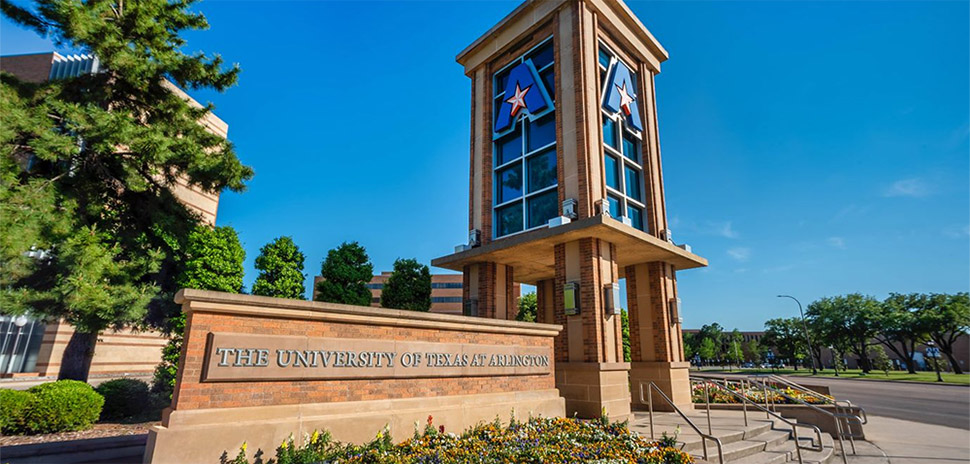The University of Texas at Arlington has become the fourth institution in the state—and the second in the Dallas-Fort Worth region—to achieve the Texas Tier One designation, a milestone that affirms UTA’s academic and research excellence.
The university joins a select and prestigious group: Texas Tech, the University of Houston, and the University of Texas at Dallas are the only other Texas Tier One schools. UTA is the first to achieve the significant designation in more than three years.
The designation represents UTA’s status as a leading research university. With the achievement, the university will now have access to resources that will allow it to continue recruiting top faculty, pursue groundbreaking research, and prepare students to enter the workforce.
It also allows the university, which spent $125 million on research overall in 2020, to tap millions in additional state funding: some $6.2 million, as reported by the Texas Tribune.
With the designation, UTA will gain entry to the state’s National Research University Fund (NRUF). The NRUF was established in 2009 by state lawmakers to offer a pathway for research institutions to become national leaders.
University leadership says the support will provide more momentum “as it continues its ascent to even greater prominence.”
“UTA joins the ranks of other Texas universities recognized by NRUF for their commitment to excellence in research and academics, and this achievement will open the door for additional research funding for the university,” Governor Greg Abbott said in a statement.
“This designation will further bolster our state’s dedication to higher education, economic development, and cutting-edge research, and I congratulate the students, professors, and faculty of UTA for achieving this prestigious milestone.”
UTA’s benchmarks
UT Arlington earned the Tier One designation by reaching or exceeding benchmarks of quality for at least two consecutive years, as established by the Texas Higher Education Coordinating Board.
Those benchmarks include:
• surpassing $45 million in restricted research expenditures
• awarding more than 200 Ph.D.s each year, which UTA has done for six years in a row
• being designated a member of the Phi Kappa Phi Honor Society
• enrolling a freshman class of high academic achievement
• having high-quality faculty
According to UTA, its growing research infrastructure also contributed to the designation. That includes its $125 million Science & Engineering Innovation & Research building opened in 2018, new residence halls, faculty and staff support building, and remodeled University Center.
A $76 million building for the School of Social Work and the College of Nursing and Health Innovation’s Smart Hospital is set to be completed in late 2022.
Last year, UT Arlington’s total research expenditures were around $125 million, with restricted and federal research expenditures of $52 million, the university said. The research has included health disparities, gerontology, Texas infrastructure for transportation and natural disaster planning, aviation technology, composite materials, and more.
That allowed the university to attract high-achieving students and faculty, who settled in Arlington from across the state and country to learn, teach, innovate, and advance their fields.
In all, UTA has 19 fellows in the National Academy of Inventors—more than any Texas institution, the university says—who are considered the “foremost authorities” on impactful research in the U.S. The fellows earn membership by making significant contributions that advance their fields of study.
UTA is also one of 131 institutions designated as R-1: Doctoral Universities—Very High Research Activity, the highest designation by the Carnegie Classification of Institutions of Higher Education.
“As an incubator for innovation and a champion of student access, UT Arlington already is a national model for urban institutions,” UT System Chancellor James B. Milliken said in a statement. “The culture of research excellence continues to flourish at UT Arlington, and this achievement reflects the campus’ exceptional—and resilient—leaders, researchers and educators.”
A more than decade-long process
The Texas Tier One designation is nearly 12 years in the making, according to Teik C. Lim, UTA’s interim president.
He says the entire Maverick team—faculty, researchers, staff, students, alumni, supporters—has collaborated to make the long-range goal a reality. He also thanks former UTA Presidents Jim Spaniolo and Vistasp Karbhari for setting UTA on the path to attaining the historic milestone.
Lim and the UTA team hope the Tier One status will reinforce its leadership role in the region. Its 240,000 or so alumni aim to boost the Dallas-Fort Worth region and state of Texas as a whole by filling jobs and making impacts within their industries.
An education at the university can pay off, too. According to the University of Texas System Smartbook 2020, UTA graduates earn the highest first-year salaries of graduates from non-medical UT System institutions.
“Texas Tier One designation is a public invitation to take a fresh look at UTA’s academic and research excellence and the impact this special university is making on the region, the state of Texas, and beyond,” Lim said in a statement. “This designation is earned through demonstrated commitment to academic and research excellence, and it means that UTA is categorized in Texas as among a small grouping of the state’s highest-quality research universities.”
This story was updated with additional details on research funding on Aug. 22, 2021, 1:18 p.m.
Quincy Preston contributed to this report.
![]()
Get on the list.
Dallas Innovates, every day.
Sign up to keep your eye on what’s new and next in Dallas-Fort Worth, every day.

































